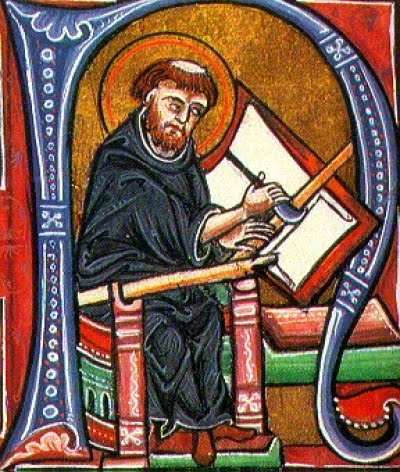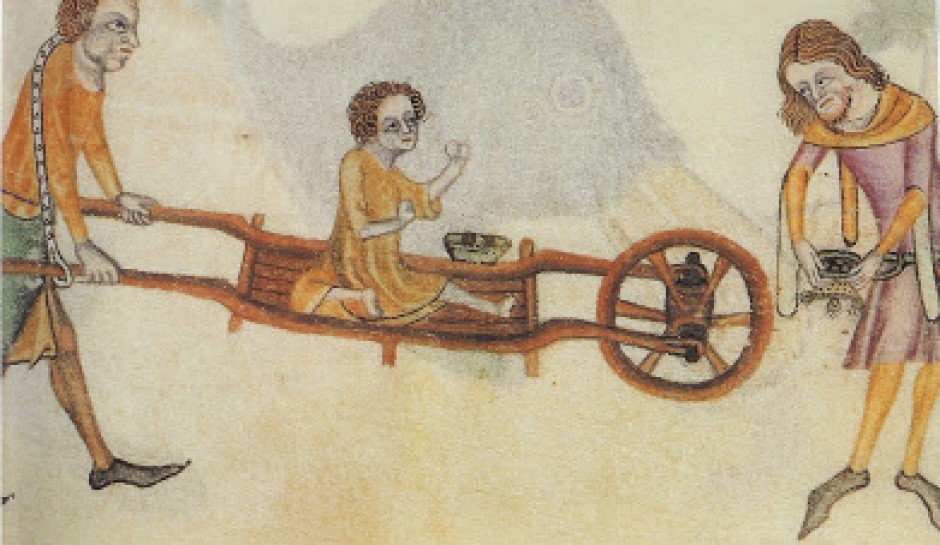October 17, 5:30 pm, 715 Hesburgh Library
{PLEASE NOTE THE NEW TIME!}
Theme:
Roundtable on Medieval Manuscript Studies
Speakers:
Daniel Hobbins (University of Notre Dame, History Department): “The History and Meaning of the Authorial Colophon”
Colophons are among the most carefully studied features of medieval manuscripts. But scribes were not alone in their use of colophons. Soon after European scribes began to date their copies in colophons, authors themselves began to date the composition of their works in a form clearly derived from the scribal colophon. In my paper I’ll provide an overview of the history of the authorial colophon, and explore what this practice can tell us about the history of authorship.
David Gura (University of Notre Dame, Special Collections): “Lemmatic displacement in the commentary of Arnulf of Orléans on Ovid’s Metamorphoses“
The transition from the catena commentary to the scholion format in the early thirteenth century affects more than just the presentation of a commentary on its manuscript page. This change in the utilitarian tradition of the commentary (e.g. oral lecture to private study) can provide further insight into the evaluation of manuscript evidence, particularly approaches to interpreting and editing both commentary and text. This paper will address how the movement of commentary formats in manuscripts may introduce variants, unexplained contaminations, and other problems into the textual traditions of both classical texts and their commentaries. Instances of these problems will be explored using examples drawn from the manuscript tradition Arnulf of Orléans’ commentary on Ovid’s Metamorphoses. The manuscript evidence for Arnulf’s commentary spans amply the late twelfth to fifteenth century in both catena and scholion formats, and includes manuscripts from France, Italy, and Germany. Examples will illustrate how lemmata can “hop” from catena (commentary only) to scholion (commentary in margine or supra uersum) and the reverse. For example, variants may enter the text of the Metamorphoses not from another manuscript of Ovid, but rather from a commentary circulating independently of its primary text and e contrario. So the mysterious Manuscript X (source of contaminatio) may actually be a lemmatic commentary and not a manuscript of the “primary” text at all. The implications of these shifts on editing commentaries are equally problematic. The grammar and syntax of a commentary changes with its format. In catena the lemmata provide a syntactically unbroken link between text and commentary. Lemmata govern the syntax of their gloss (e.g. morphology, noun-adjective agreement, antecedents of pronouns, grammatical constructions) and can exert an influence on word order of both gloss and lemma (e.g. placement of enclitics, emphasis, structural/stylistic features). These features change when the same text is written in margine or supra uersum, in which lemmata often are omitted entirely. The possibility of having layered versions of a text places an editorial value on manuscripts format, which, previously, has been all but ignored.
Christopher Scheirer (University of Notre Dame, Medieval Institute): “Throwing Open the Doors of the Word: Symbolizing the Book as Building in Aldred’s Colophon for the Lindisfarne Gospels”
The “Lindisfarne” Gospels, perhaps the most famous and arrestingly beautiful suriving product of early Insular book production, is now better known than ever, thanks in no small measure to two volumes of essays by Michelle Brown in 2004 and 2008 and, more recently, its much anticipated homecoming exibition in Durham Cathedral this past summer. Unique on a variety of levels, and a treasure trove of scholarly interest for art historians, palaeographers, biblical scholars, and historical linguists alike, the “Lindisfarne” Gospels has the further distinction of being one of only two gospel codices from the Anglo-Saxon period supplied with full interlinear Old English glosses. The scribe and glossator, Aldred, a priest and member of the community of St. Cuthbert at Chester-le-Street in the middle of the tenth century, is also responsible for the lenghthy colophon appended to the end of St. John’s Gospel on fol. 259rb of the manuscript.
In many ways unparalleled both in length and content in the corpus of Insular scribal colophons, Aldred’s text purports to give account of the book’s material history and the circumstances of its production at Lindisfarne in the late seventh or early eighth century. As Francis L. Newton, Francis L. Newton, Jr., and I have argued in a recent article, however, Aldred does far more in the colophon than simply communicating historical “fact,” instead carefully and meticulously structuring his text so as to operate on a number of symbolic and metaphorical levels. The present brief essay will focus more closely on but one of these metaphorical stuctures, namely, Aldred’s deployment of the Cassiodorean conception of the book as a building, or rather, of the Scriptuarum divinarum palatia, and the subtle ways in which he articulates this understanding throughout the colophon.
